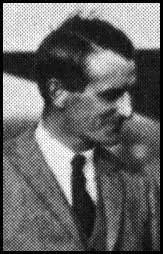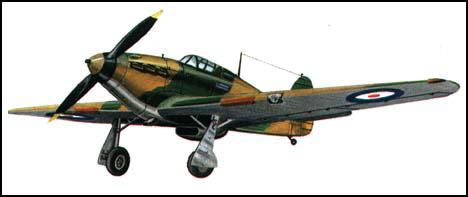Sydney Camm

Sydney Camm, the son of a carpenter, was born in Windsor, on 5th August, 1893. After leaving school Camm became an apprentice woodworker and as a hobby he made model aircraft.
Camm joined the G. H. Martinsdale aeroplane company and worked there throughout the First World War. In was during this period he had his first experience of designing aircraft.
In 1922 Camm joined the Hawker Engineering Company in Kingston. Starting as a senior draughtsman, he was appointed chief designer in 1924.
Camm began work on the Hawker Hurricane in 1934. Like Reginald J. Mitchell, the designer of the Supermarine Spitfire Mk. I, Camm was inspired by the announcement that the Air Ministry was looking for a new fighter plane.
The Hawker Hurricane prototype made its first flight on 6th November, 1935. It reached a maximum speed of more than 315 mph (506 km/h) at 16,500 ft (5,000 m). It was therefore the first fighter plane to break the 300 mph barrier. Like the Supermarine Spitfire, the aircraft used the 1,030 hp Rolls Royce Merlin II and carried 8 machine-guns.
On 3rd June, the Royal Air Force ordered 600 of these aircraft. The first of these came off the production line in October 1937. It was all-metal in structure and except for the metal nose was covered in fabric.
On the outbreak of the Second World War there were 497 Hurricanes in service. The majority of these were sent to France during Germany's Western Offensive and large numbers were destroyed by the Luftwaffe .
By August 1940, a total of 2309 Hawker Hurricanes had been delivered to the Royal Air Force and they formed the backbone of Fighter Command. Statistics show that Hurricanes destroyed more German aircraft than all other British types combined during the early stages of the war.
At the beginning of the Battle of Britain the RAF had 32 squadrons of Hurricanes and 19 squadrons equipped with Supermarine Spitfires. It was decided to use the Hurricanes against the massive bomber formations of the Luftwaffe whereas the Spitfires were mainly employed against German fighters.
Camm also designed the Hawker Typhoon that began production in 1942 and Hawker Tempest in 1944. Throughout the war Camm made improvements to the Hurricane. This included the Hawker Hurricane Mk.II which had the more powerful 1,280 hp Rolls Royce Merlin XX and the Hawker Hurricane Mk D which carried two 20 mm cannons which were extremely effective against tanks and were used chiefly in the Desert War.
After the war Camm designed jet aircraft such as the Sea Hawk and the Hunter, which won the world air speed record and remained operational for 20 years. He also designed the vertical take off and landing P-1127 Kestrel in 1958.
Sydney Camm was on the board of Hawker Siddeley Aviation from 1935 until his death at Richmond, Surrey on 12th March, 1966.

Primary Sources
(1) Douglas Bader first flew a Hawker Hurricane for the first time in June, 1940 when he became squadron leader of 242 Fighter Squadron.
The Hurricane was slower than the Spitfire, with a maximum speed of 335 mph against 367 mph. The Hurricane also was less elegant to the eye, but then there has never been such a beautiful areoplane as the Spitfire. For all that, like other fighters from the Hawker stable, and the result of the design genius of Sydney Camm, the Hurricane was a thoroughbread and looked it. Like the Spitfire it was immensely strong: a pilot had no need to fear the danger of pulling the wings off, no matter how desperate the situation became.
When I first flew the Hurricane in June 1940, I was agreeably surprised at the compact feel of the aeroplane. It had seemed big on the ground in comparison with the Spitfire; in the air it felt nothing of the sort. You could see out of it better and the controls were perfectly harmonized. It climbed steeply and at a lower speed but required a good deal of right rudder in the climb, to counteract the engine torque. I found this a considerable nuisance on a long climb.
Like all pilots who flew and fought in the Hurricane, I grew to love it. It was strong, highly maneuverable, could turn inside the Spitfire and of course the Me 109. Best of all, it was a marvellous gun platform. The sloping nose gave you a splendid forward view, while the eight guns were set in blocks of four in each wing, close to the fuselage. The aeroplane remained rock steady when you fired. Unlike the Spitfire with its lovely elliptical wing which sloped towards the tip, the Hurricane wing was thicker and straight. The Spitfire was less stead when the guns were firing because, I have always thought, they were spread further along the wing, and the recoil effect was noticeable.
